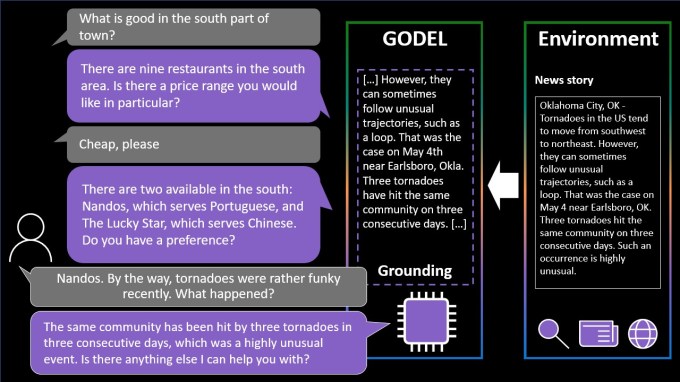Research in the field of machine learning and AI, now a key technology in practically every industry and company, is far too voluminous for anyone to read it all. This column, Perceptron, aims to collect some of the most relevant recent discoveries and papers — particularly in, but not limited to, artificial intelligence — and explain why they matter.
In this batch of recent research, Meta open-sourced a language system that it claims is the first capable of translating 200 different languages with “state-of-the-art” results. Not to be outdone, Google detailed a machine learning model, Minerva, that can solve quantitative reasoning problems including mathematical and scientific questions. And Microsoft released a language model, Godel, for generating “realistic” conversations that’s along the lines of Google’s widely publicized Lamda. And then we have some new text-to-image generators with a twist.
Meta’s new model, NLLB-200, is a part of the company’s No Language Left Behind initiative to develop machine-powered translation capabilities for most of the world’s languages. Trained to understand languages such as Kamba (spoken by the Bantu ethnic group) and Lao (the official language of Laos), as well as over 540 African languages not supported well or at all by previous translation systems, NLLB-200 will be used to translate languages on the Facebook News Feed and Instagram in addition to the Wikimedia Foundation’s Content Translation Tool, Meta recently announced.
AI translation has the potential to greatly scale — and already has scaled– the number of languages that can be translated without human expertise. But as some researchers have noted, errors spanning incorrect terminology, omissions, and mistranslations can crop up in AI-generated translations because the systems are trained largely on data from the internet — not all of which is high-quality. For example, Google Translate once presupposed that doctors were male while nurses were female, while Bing’s translator translated phrases like “the table is soft” as the feminine “die Tabelle” in German (which refers a table of figures).
For NLLB-200, Meta said it “completely overhauled” its data cleaning pipeline with “major filtering steps” and toxicity-filtering lists for the full set of 200 languages. It remains to be seen how well it works in practice, but — as the Meta researchers behind NLLB-200 acknowledge in an academic paper describing their methods — no system is completely free of biases.
Godel, similarly, is a language model trained on a vast amount of text from the web. However, unlike NLLB-200, Godel was designed to handle “open” dialogue — conversations about a range of different topics.
Image Credits: Microsoft
Godel can answer a question about a restaurant or have a back-and-forth dialogue about a particular subject, such as a neighborhood’s history or a recent sports game. Usefully, and like Google’s Lamda, the system can draw on content from around the web that wasn’t a part of the training data set, including restaurant reviews, Wikipedia articles, and other content on public websites.
But Godel encounters the same pitfalls as NLLB-200. In a paper, the team responsible for creating it …read more
